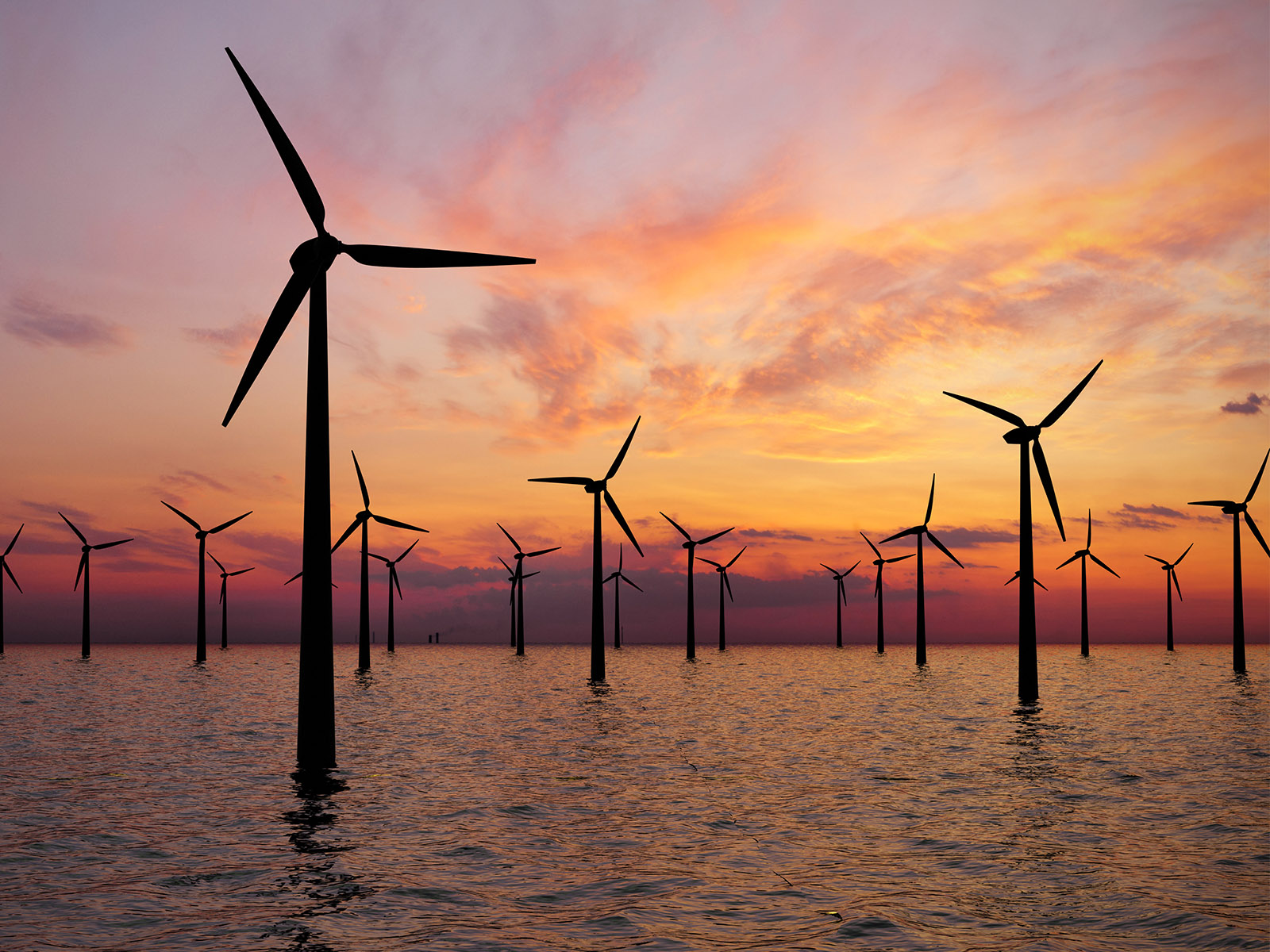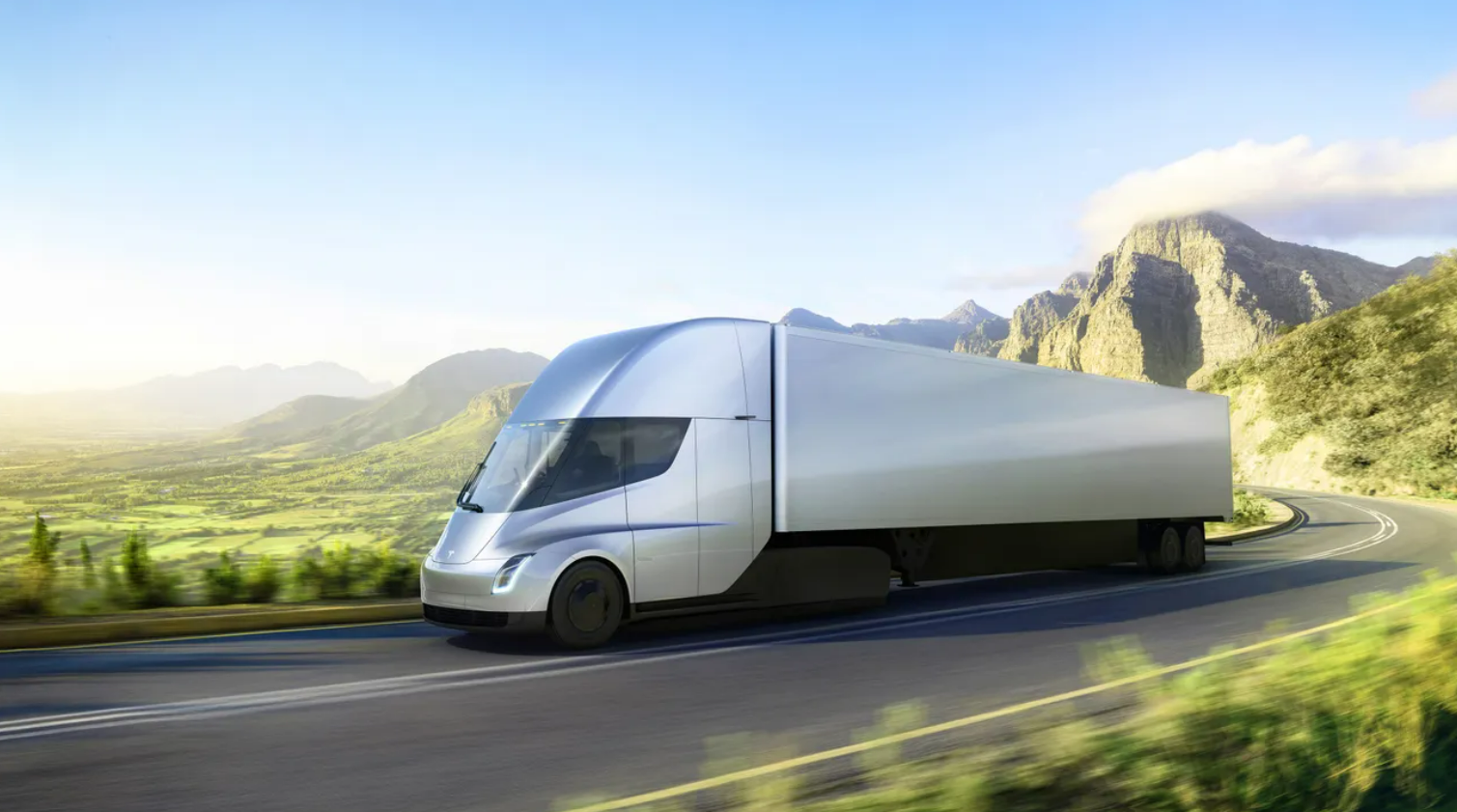Experiments dealing with space may be both educational and enjoyable, as demonstrated by a recent experiment. Space is symbolic of a limitless amount of possibility. An egg is seen descending from the sky in a video that has gone viral and was posted on YouTube by a former NASA engineer.
How Did the Idea Come About?
During our early years, many of us were exposed to the egg drop experiment that was performed in science class. On the other hand, one former NASA engineer took it to an entirely new level. We are specifically referring to the stratosphere here. And just as you would anticipate a former NASA engineer to do, Mark Rober and his colleagues continuously designed and revised a system that would launch an egg into space and then return it back down to Earth.
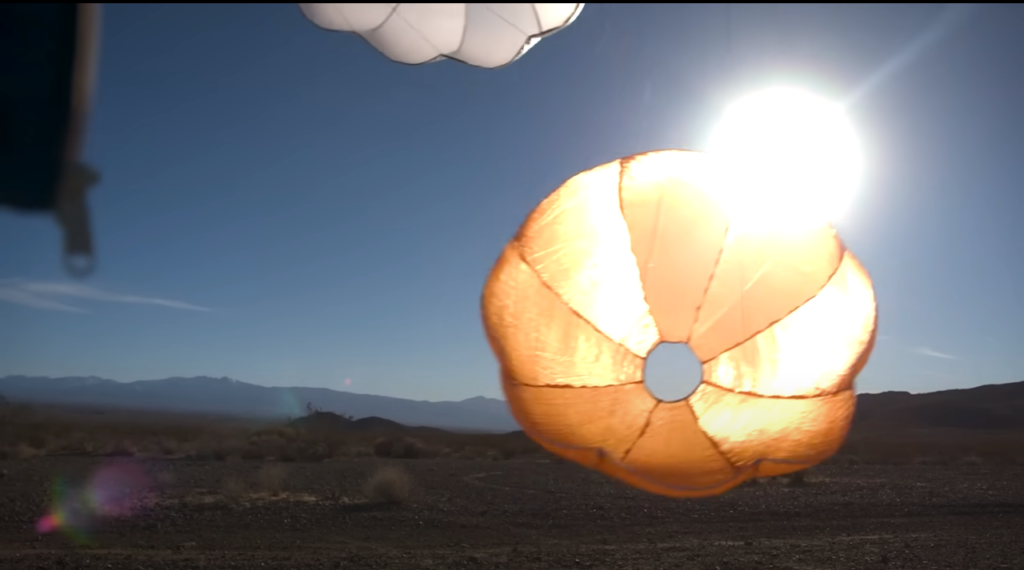
They received assistance from a few other graduates of the Jet Propulsion Laboratory. And even a parachute is constructed from the same material used for Mars rovers. In addition, similar to the most successful NASA projects, this one will require years of testing, numerous setbacks, and numerous canceled launches before it can be completed.
Mark Rober had the goal of successfully dropping an egg from the highest position he could reach. Because buildings were continuing to rise taller, and he wanted to ensure that his experiment would be valid in the future, he chose to launch his egg from space. He made a video of the entire incident to record it.
Click on the image below to watch the complete video
Was the Experiment Successful?
The YouTube video celebrates a successful conclusion to the project that was begun three years ago. And in the few days after it was posted, it has already gathered more than 17 million views! Both the egg that was in the rocket and the redundant backup egg that Rober insisted on bringing down to Earth with them are found to be in perfect condition.
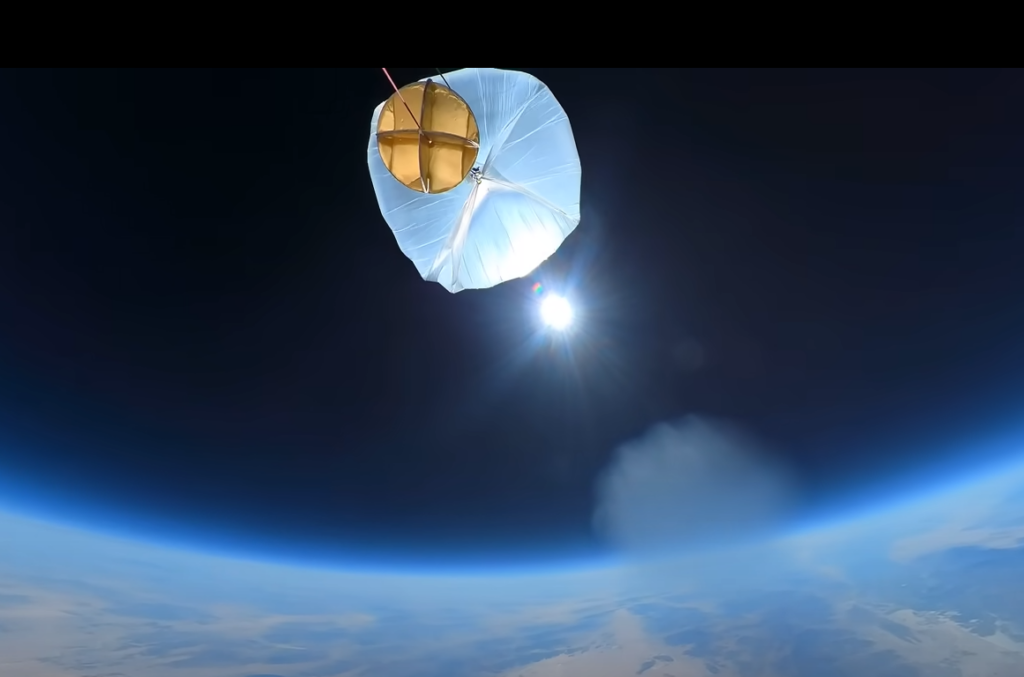
Despite the fact that the rig released them at an altitude of 100,000 feet (which is “only” around 19 miles up), they were nevertheless considered to be in space (which is about three times that high). The egg should be cracked at the end to demonstrate that it was real. That’s the only thing that’s lacking. We can say with absolute certainty that they did not parboil it in advance. However, they do suggest the installation of a warming device in order to prevent the egg from becoming frozen while it is being transported.
How Did Mark Rober Drop the Egg From Space?
According to what Mark Rober claimed, he undertook this quest three years ago. In addition to that, he claimed that he was unaware that the production of this film would be the most intellectually, physically, and financially taxing experiment that he had ever tried.
1st Attempt
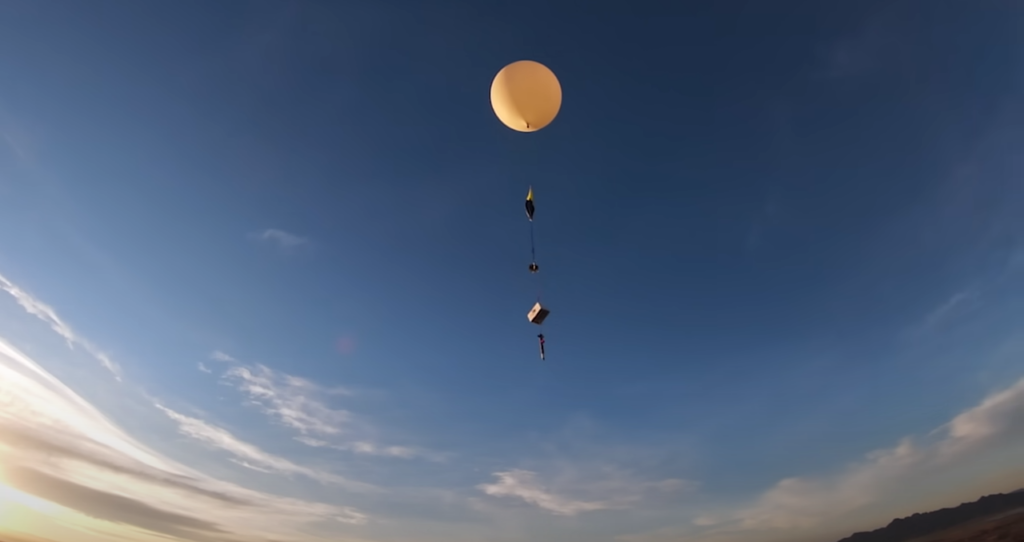
When he talked about his first idea, he said that the goal was to attach an egg to the front of a rocket, then connect that rocket to a weather balloon, and then send the whole thing into space. Once it got there, the weather balloon would drop it, and the rocket would start to move forward just because of gravity. Eventually, it would move faster than Mach 1, which is the speed of sound.
Then, it would use the four fins on its back to steer itself to the target location. At 300 feet above the ground, it would let go of the egg, which would fall freely onto a mattress they had set up on the ground.
During the course of the experiment, he was unsuccessful, and the eggs ended up cracking. After that, he sought the counsel of his close friend Adam Stelzner, who holds a Ph.D. from Caltech and is also the chief engineer for the Perseverance mission and the Mars sample return. Stelzner recognized straight away that there was a critical problem in the experiment.
2nd Attempt
Rober decided to entirely ditch the original design once he had a better knowledge of the new circumstances. He then spent a number of months planning out and constructing a new system that was greatly inspired by Curiosity Landing.
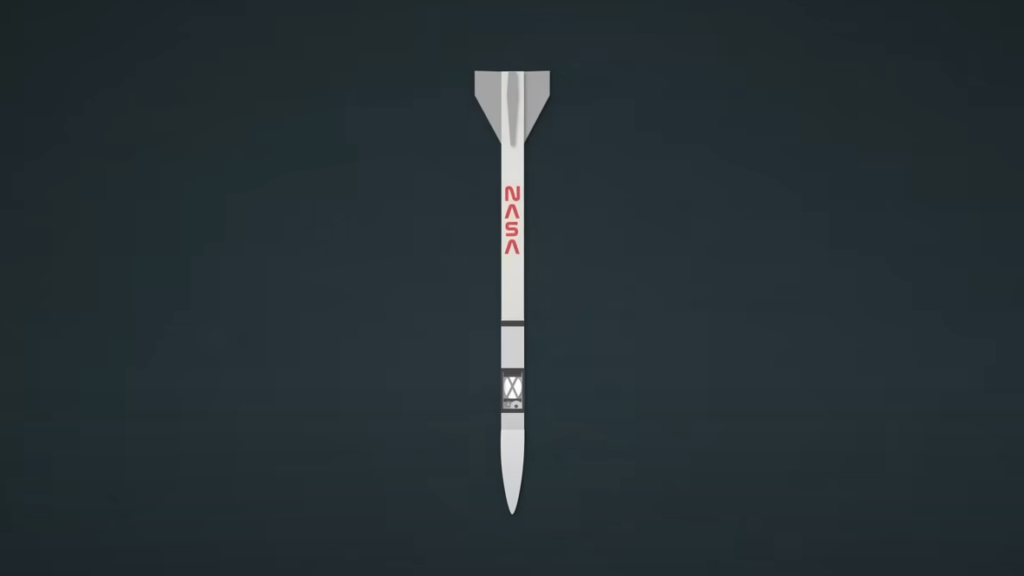
He continued to explain the new plan by stating that they’d still go into space on a weather balloon; nevertheless, the rocket would have immobile fins and be three times as long and four times as heavy to ensure that the egg would reach supersonic speeds on the way down.

He went on to explain that after passing the sound barrier, they would separate from the rocket’s rear section, much like NASA does when separating the crew stage in the high atmosphere, and then use arrow braking to dissipate a lot of energy and speed.
This would naturally error break and slow down to the new lower terminal velocity because of its drastically reduced mass. He compared the procedure to NASA’s crew stage separation in the high atmosphere.
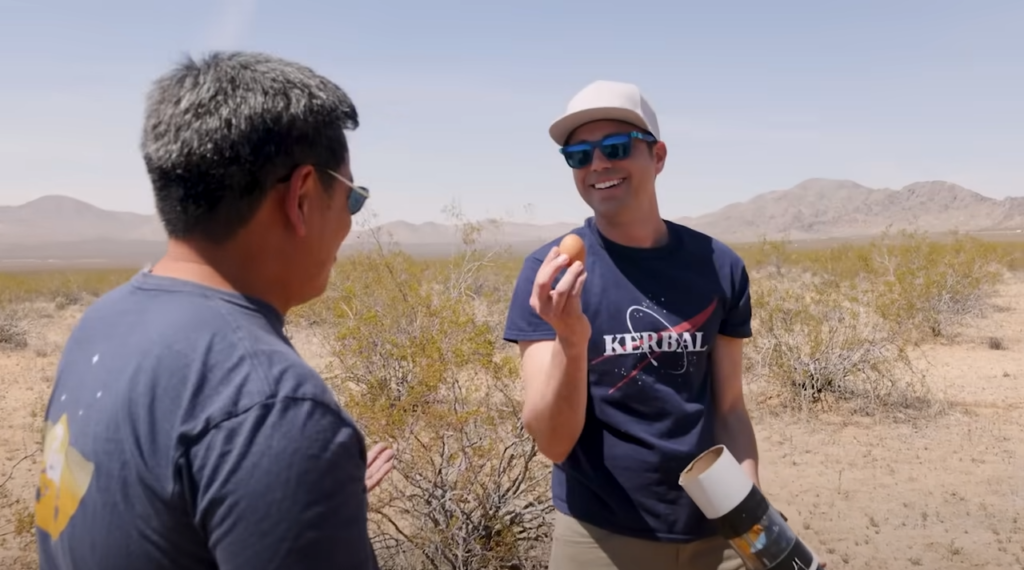
The landing, which had initially been decided to take place on a mattress, was later changed to take place on a dessert and was also successfully carried out.
The video, which is 27 minutes long and was uploaded by Rober on November 25th, has now received more than 29 million views. His fans were absolutely blown away by the outcomes of the egg-drop adventure he posted on social media.


